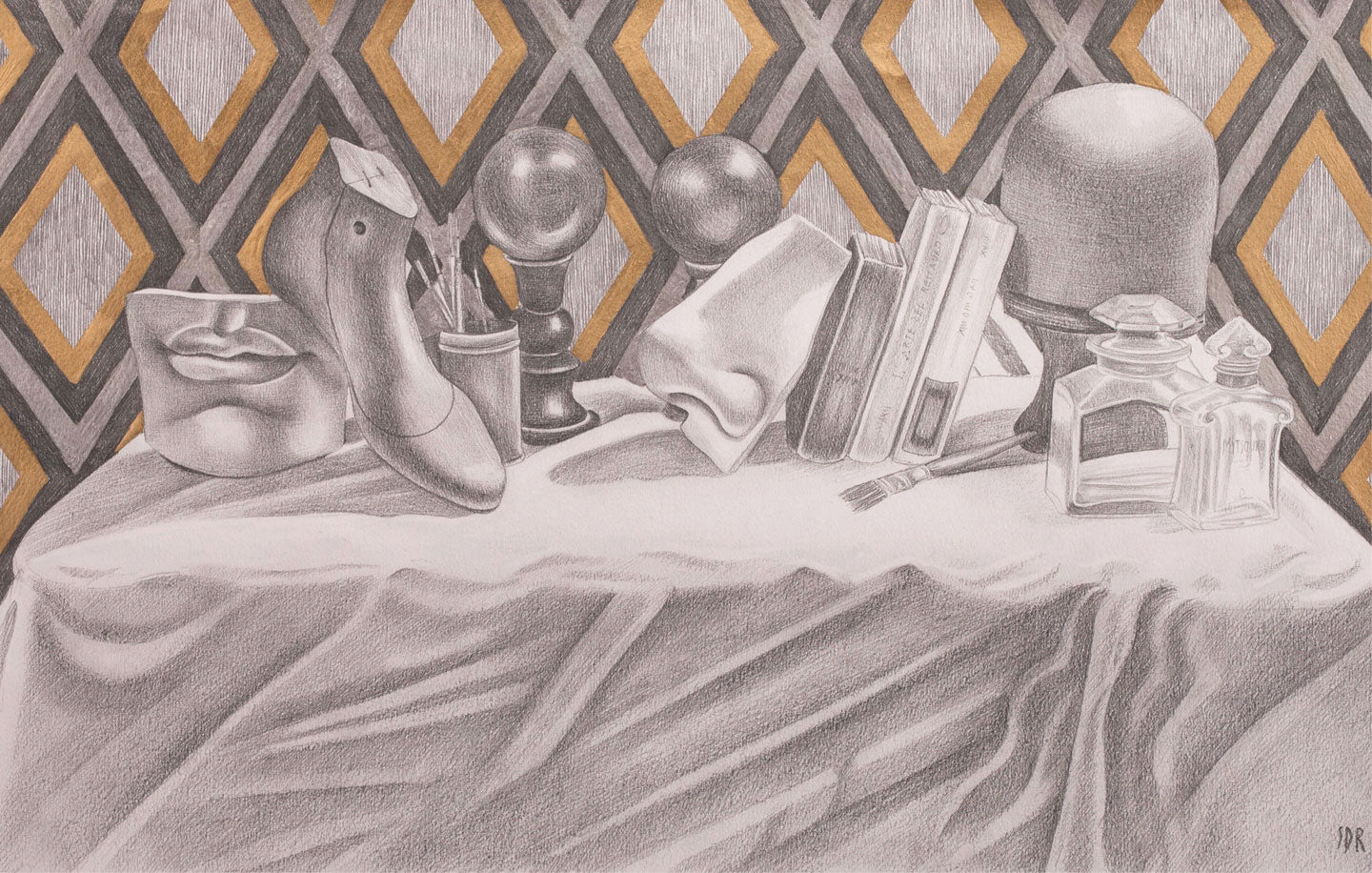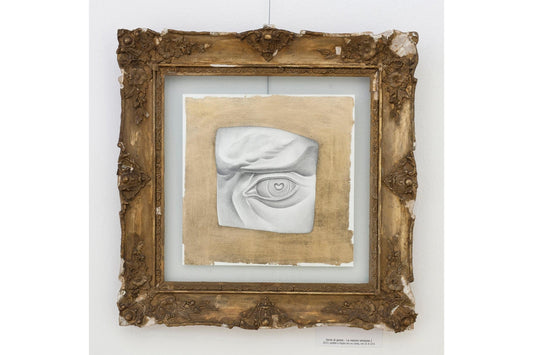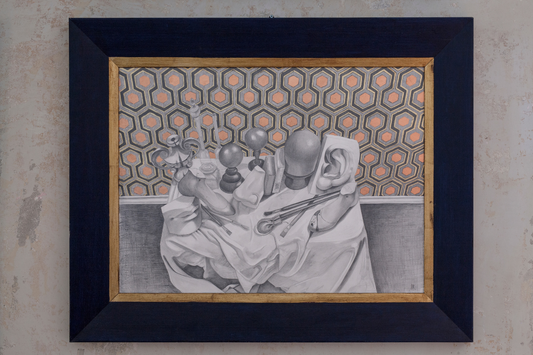The Still Lifes
You may be wondering why they are so dear to me…First of all, as you may have already noticed, the subjects of my still lifes are not the iconic fruit baskets…
The still lifes I make depict anomalous and unusual objects that generally do not belong to this type of artwork.
What I represent in this series of drawings are elements that are part of my past.
Since I was a child, the objects that lived in my house (which was often my mother’s restoration workshop) have always fascinated me.
Not only the most common ones found in many homes (such as, for example, old antique books) but also and above all the more particular and unusual ones that made me feel the thrill of living in a unique and out of the ordinary environment.
This was possible thanks to my mother, her profession as a restorer, and her particular taste in furnishing.
I was surrounded by the “tools of the trade” such as pigments, solvents, brushes, glass bottles, easels, and so on…
In addition to such objects, there were also many paintings and frames that, like patients in the doctor’s waiting room, awaited hospitalization in my mother’s wise and affectionate hands, who would bring them to new splendor.
But there were also other curious objects, especially for a little girl.
There were, in fact, casts and plasters depicting anatomical parts, cartouches left orphans of ancient frames (but which were carefully preserved), masks that my mother made with paper mache, ancient glass bottles of different shapes, and, of course, the famous pedestals that often supported golden spheres.

The various paintings that were waiting to be restored constituted a kind of assembly, in which the most disparate characters (such as a portrait of a lady from the 1800s or a bucolic landscape) kept us company until they were returned to their rightful owners.
Every corner of the house was itself a kind of painting.
These objects, even if arranged in an absolutely random way, unwittingly created compositions worthy of an artwork.
Perhaps this is why objects have always communicated something to me; something that goes beyond their form and matter.
As with people, I find that objects also possess energy and are able to communicate sensations, emotions, and moods, even if they “speak” a different language than the one we use.
I firmly believe that, despite their stillness, they are more alive than ever!
To conclude this article, I believe that the following quote by Italo Calvino taken from the novel “If a traveller on a winter’s night” fits perfectly:
If I knew how to draw, I would apply myself only to studying the shape of inanimate objects, – I said with a certain peremptoriness because I wanted to change the subject and also because a really natural inclination leads me to recognize my moods in the immobile suffering of things.”
If you want to see other works from the Still Life collection click here below
Click here to discover the “Still Lifes” collection
If you want to read the other articles that talk about my works’ other subjects, you find the links below.– Click here to read the article about the Self Portraits – Click here to read the article about the Animals on Pedestal – Click here to read the article about the Female PortraitsNow I’d better go back to sharpening the pencils. See you soon!




